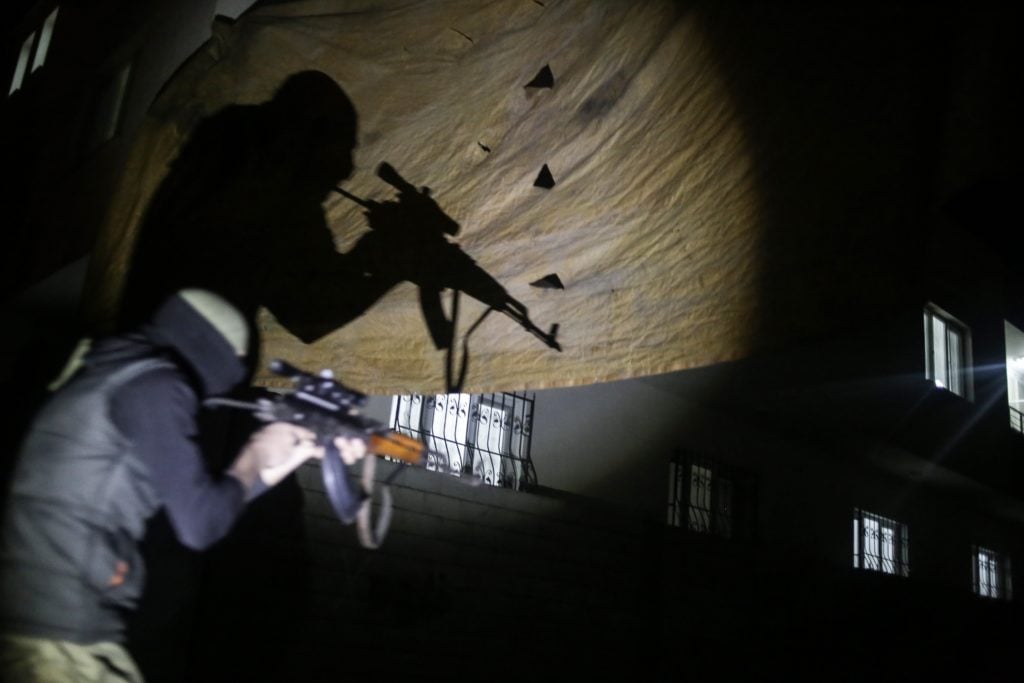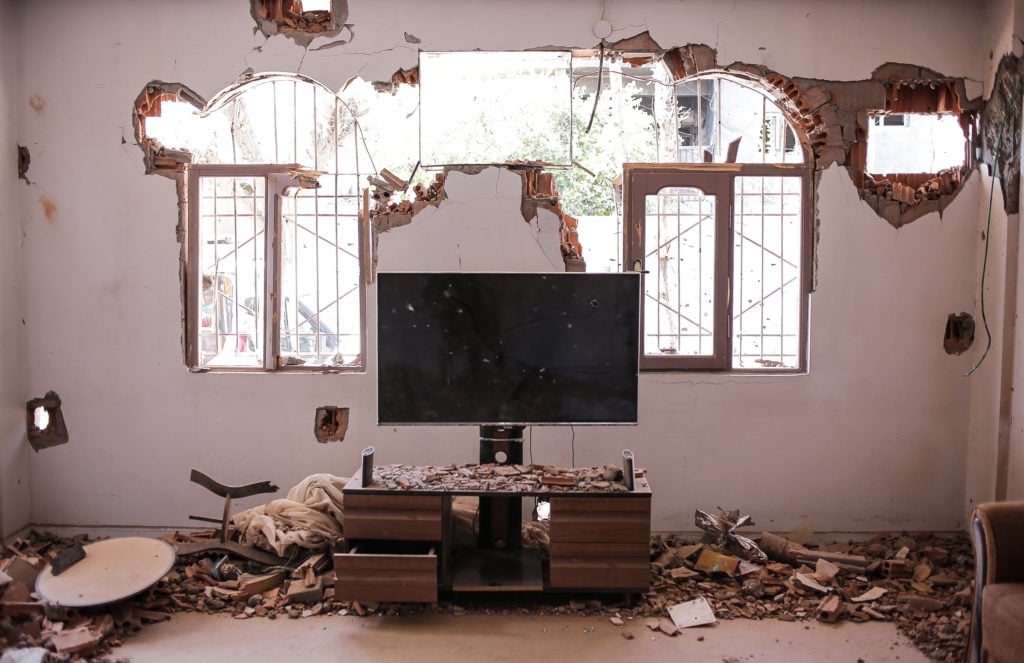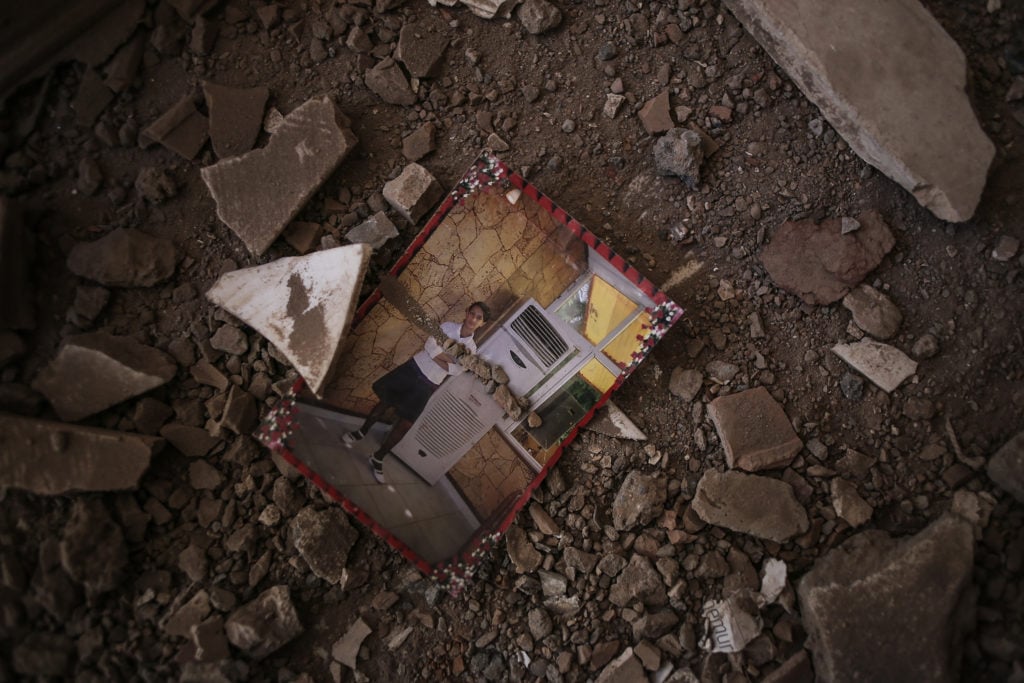Law & Politics
A Turkish Photojournalist Stands Trial for Terrorism in a Case That Is Drawing Attention to the Country’s Restriction of Press Freedoms
The 27-year-old photographer could go to prison for more than 22 years if convicted.

The 27-year-old photographer could go to prison for more than 22 years if convicted.

Taylor Dafoe

Turkish photojournalist Cagdas Erdogan stands trial today in the country’s highest court for alleged acts of terrorism. The 27-year-old has been accused of creating and disseminating propaganda for the far-left Kurdistan Workers’ Party (PKK), according to a report from the Art Newspaper. It’s the latest case to spark outrage over Turkey’s clampdown on press freedom.
The charges stem from Erdogan’s ongoing photo series Cold Summer, which documents the persistent conflict between the PKK and the Turkish military. For part of the project, the photographer immersed himself within the Patriotic Revolutionary Youth Movement, a branch of the PKK.
Erdogan’s Cold Summer images have been picked up by international publications including the Associated Press, the New York Times, and the Guardian. If found guilty, he faces a prison sentence of more than 22 years.
“If the legal process were lawful and rational, I would be acquitted on the first day,” he told The Art Newspaper. “I’m in a Kafkaesque loop. The whole process is irrational.”

A photograph of a destroyed house in Cizre, Turkey, from Cagdas Erdogan’s Cold Summer series (2016). Photo: Cagdas Erdogan/Getty Images.
In September 2017, the young self-taught photographer faced a similar plight when he was arrested for allegedly taking photographs of the Millî İstihbarat Teşkilatı building in Istanbul, where Turkey’s National Intelligence officials work. He spent 6 months in prison awaiting trial.
“For years I have been taking photos in war zones in the east of Turkey and in the main cities,” he told the British Journal of Photography after regaining his freedom in February 2018. “My work [has] always been about Turkish and Middle East topics: political protests, conflicts, minorities issues, ecological problems, [the] LGBT movement, Turkey’s underground world, and secretly organized sex parties. However, state officials claimed that I was a member of the PKK without any proof or even reason. I am wondering what they think: what kind of terrorist organization’s member would take pictures of sex parties”?

A picture of a girl left in the rubble of a ruined house in Cizre, Turkey, from Cagdas Erdogan’s Cold Summer series (2016). Photo: Cagdas Erdogan/Getty Images.
Erdogan’s case isn’t the only one to draw international attention to the Turkish crackdown on free speech. In February, painter and journalist Zehra Doğan finished a prison sentence of nearly three years for painting a scene of urban destruction caused by Turkish security forces, featuring derelict buildings draped in the country’s flag. The incident caused an uproar amongst human rights groups and free speech advocates around the world, and was even memorialized by Bansky with a mural in New York.
Many of those same groups hope that Erdogan’s case will continue to shine a lot on the issue, regardless of the trial’s outcome.
“The case of Cagdas Erdogan perfectly reflects the ongoing judicial abuses against photojournalists in Turkey,” Erol Önderoğlu, the Turkish representative for the international advocacy group Reporters Without Borders, told The Art Newspaper. (Önderoğlu himself is awaiting trial for similar accusations of allegedly supporting terrorism.)
“Turkish correspondents are routinely accused of terrorism as a result of new and entirely disproportionate anti-terror legislation,” he said. “The publication of any pictures of PKK fighters—particularly when they’re defined as militants, rather than explicitly as terrorists—means the photographers themselves are accused of direct affiliation.”